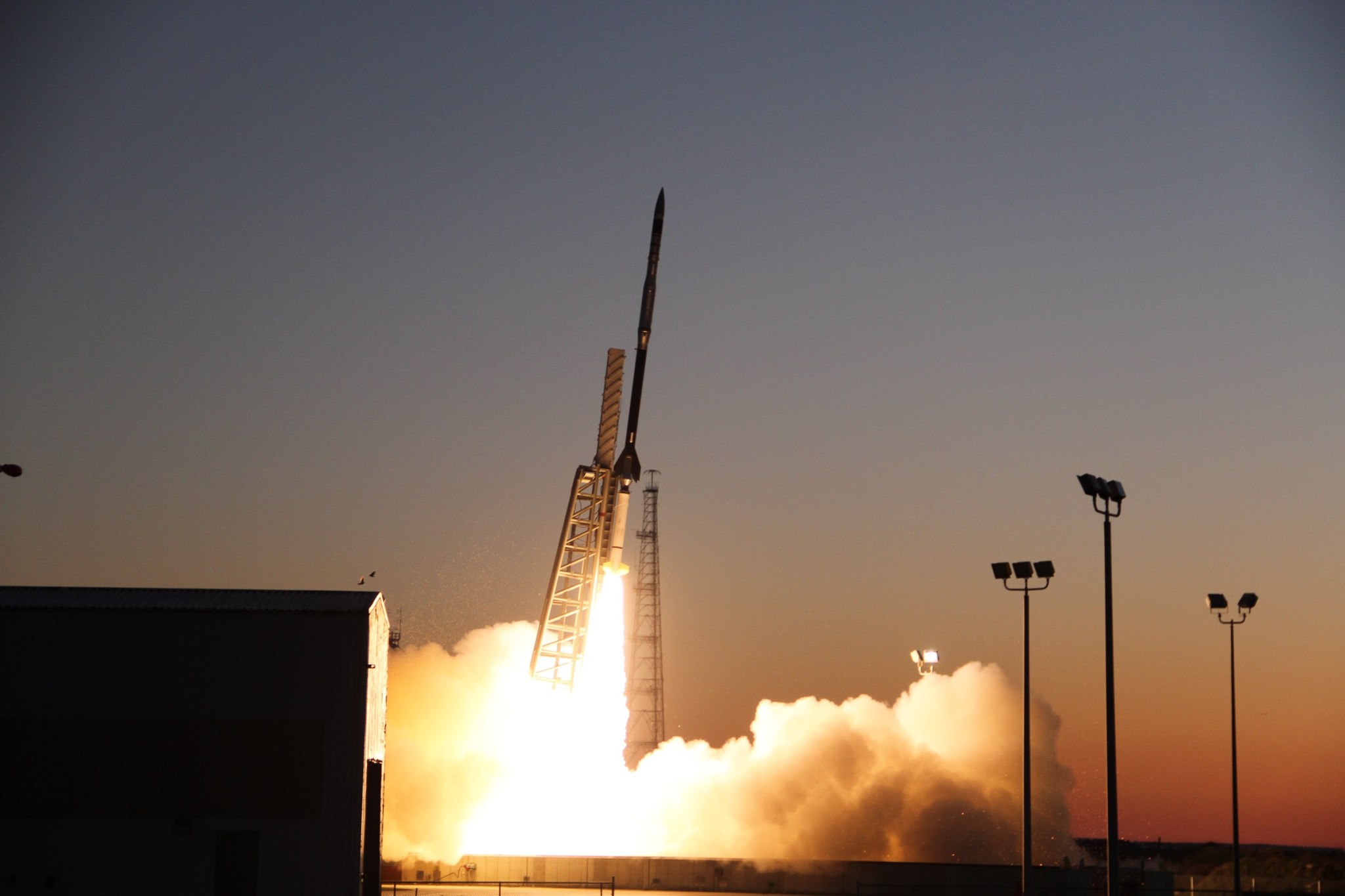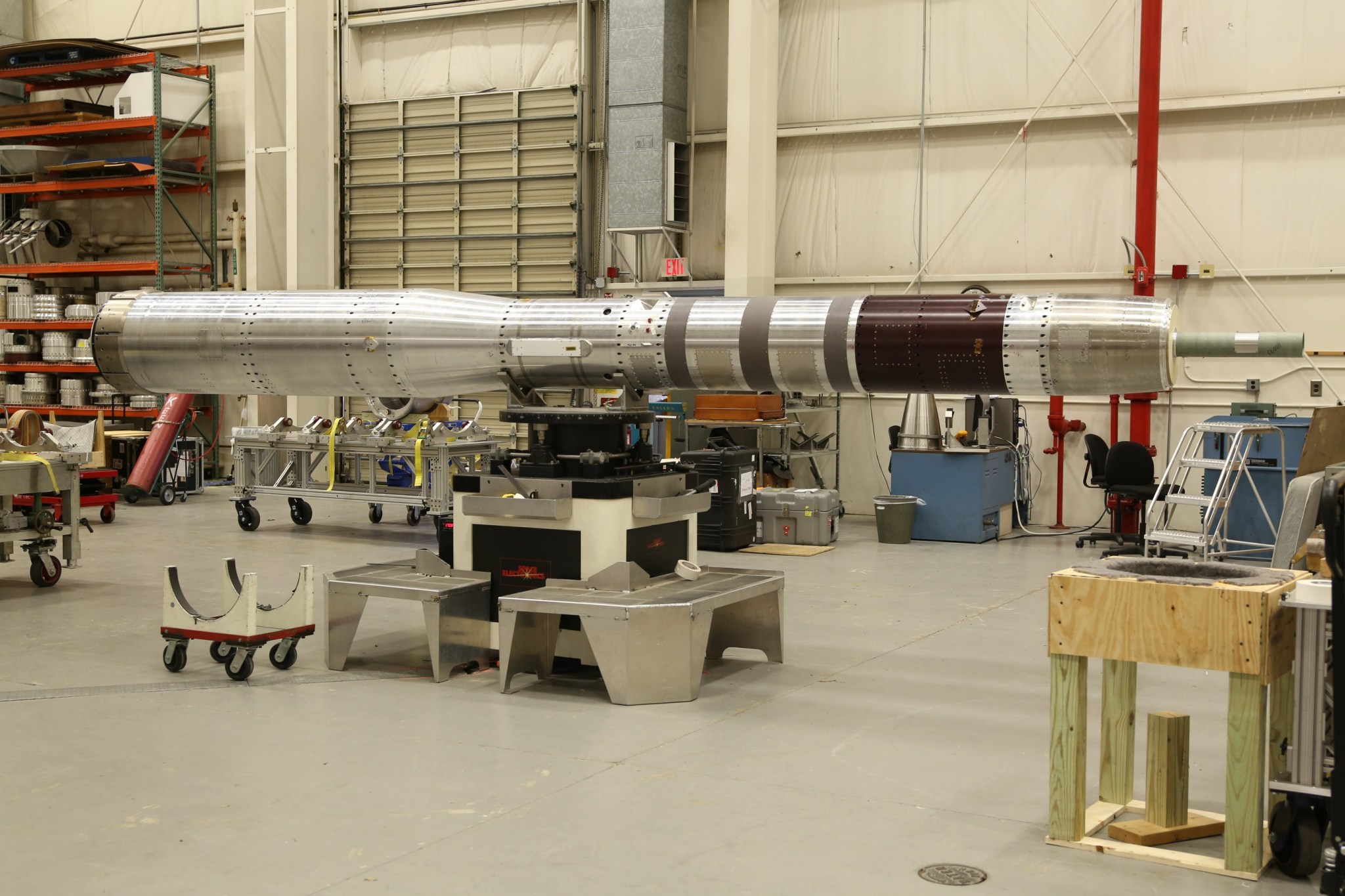
Update: 7:30 a.m., May 16 — NASA successfully launched the SubTec-7 payload on a Black Brant IX suborbital sounding rocket at 5:45 a.m. EDT, May 16, from the Wallops Flight Facility. The payload flew to an altitude of about 154 miles before descending by parachute and landing in the Atlantic Ocean. SubTec-7 provided a flight test for more than 20 technologies to improve sounding rocket and spacecraft capabilities. Good data was received during the flight. The payload has been recovered.
New rocket and spacecraft technology can be tested on the ground, such as in labs. However, in some cases a new technology needs to be flight tested to see how it performs in the “real-world” environment.
A NASA sounding rocket launch from NASA’s Wallops Flight Facility in Virginia on May 16 will provide the flight testing needed for 24 experiments and new technologies.
The launch of a 56-foot tall Black Brant IX rocket is scheduled between 5:45 and 6:40 a.m. EDT and can be seen by residents on the Eastern Shore of Virginia and Maryland. Backup launch days are May 17 – 19.
Cathy Hesh, technology manager for the sounding rocket program office at Wallops, said, “Sounding rockets are not only used for conducting science missions but also provide an excellent platform for technology development. While the flight is short in duration, enough flight time is provided to test the new technologies.”
The SubTec-7 mission will test technologies, many of which were developed at Wallops, to improve the capabilities of sounding rockets for supporting science missions and also those that may be applied to spacecraft.
The primary goal of the flight is to test two capabilities for sounding rocket missions to improve payload recovery systems. The first is a shutter door system that will allow recovery of a telescope payload in water environments, expanding the capabilities for science research.
For example, launches from Kwajalein Atoll in the South Pacific Ocean would allow telescope observations from the southern hemisphere. Currently, telescope missions are limited to land recovery locations such as the White Sands Missile Range in New Mexico, providing viewing from the northern hemisphere.
The second goal of the flight is to update the electronic and mechanical systems of the current recovery system whose heritage dates back to the 1970s. These updates also will decrease the system’s length and weight, which will allow for comparable increases in science instruments that can be flown.
The nearly 1,200-pound payload is planned to be recovered. After an approximate 17-minute flight, the payload is expected to descend by parachute and land in the Atlantic Ocean about 106 miles from Wallops Island, Virginia.
In addition, electrical and other components are being tested, many for flight qualification, that will improve sounding rocket payload capabilities. These include a solar sensor, low cost star tracker, power supply, timer, command and uplink stack, receiver transmitter, inertial measurement unit and a solid state altimeter.
Also, three packages are being flight tested under NASA’s Space Technology Mission Directorate’s Game Changing Development program. These tests include a carbon nanotube Composite Overwrap Pressure Vessel, a joint effort by NASA’s Glenn Research Center in Cleveland, Ohio, Langley Research Center in Hampton, Virginia, and the Marshall Space Flight Center in Huntsville, Alabama; a CubeSat test of ultra-lightweight materials from Orbital ATK, Dulles, Virginia; and a Mars Packing Efficiency Payload from NASA Langley.
The NASA Visitor Center at Wallops will open at 5 a.m. on launch day for viewing the flight. The rocket launch is expected to be seen throughout Chesapeake Bay region.
Live coverage of the mission is scheduled to begin at 5:15 a.m. on the Wallops Ustream site. Launch updates also are available via the Wallops Facebook and Twitter sites. Facebook Live coverage begins at 5:30 a.m.

Smartphone users can download the “What’s Up at Wallops” app, which contains information on the launch as well as a compass showing the precise direction for launch viewing.
NASA’s Sounding Rocket Program is conducted at the agency’s Wallops Flight Facility, which is managed by NASA’s Goddard Space Flight Center in Greenbelt, Maryland. Orbital ATK provides mission planning, engineering services and field operations for the NASA Sounding Rocket Operations Contract. NASA’s Heliophysics Division manages the sounding-rocket program for the agency.
Photo caption: SubTec7 payload undergoes final testing and evaluation at Wallops.
Photo credit: NASA Berit Bland
Keith Koehler
NASA’s Wallops Flight Facility, Virginia
keith.a.koehler@nasa.gov
757-824-1579

























